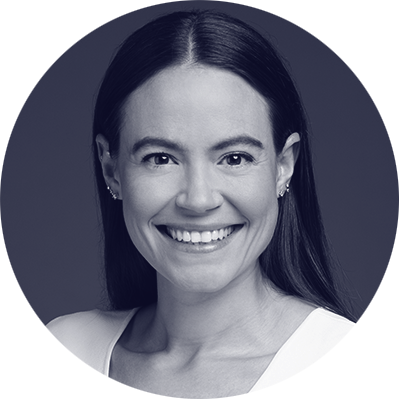#219: EVs, Autopilot, Drug Development, Crypto, E-Commerce, & Fintech
- 1. Will People Stop Buying EVs Now That Gas Prices Are So Low?
- 2. ARK’s Takeaways From A Recent Talk By Tesla’s Andrej Karpathy
- 3. COVID-19 Related Delays in Clinical Trials Could Expose How Inflated Estimates of Development Costs Are
- 4. Facebook’s Libra Announces Significant Revisions to Its White Paper
- 5. Facebook Bets Big on India with $5.7 Billion Investment in Jio
- 6. Square is Starting to Integrate Its Consumer and Merchant Ecosystems
1. Will People Stop Buying EVs Now That Gas Prices Are So Low?

While investors are asking if electric vehicle (EV) sales will fall now that gas prices have dropped so dramatically, ARK believes that the question misses the mark. It assumes that auto buyers make their decisions based on the total cost of ownership (TCO) which, if true, would suggest that EV sales should be much higher than they are today.
According to ARK’s research, over a three-year period the Long-Range Tesla Model 3 is already less expensive to own than a Toyota Camry, and the low-end Model 3 less expensive than a Ford Focus. The TCO is much more sensitive to a vehicle’s residual value than to gas prices. In our view, the right question is how low the prices of used gas-powered cars will go as the market transitions first to electric vehicles, and then to autonomous electric vehicles.
2. ARK’s Takeaways From A Recent Talk By Tesla’s Andrej Karpathy

Recently, Andrej Karpathy, Head of Artificial Intelligence (AI) on Tesla’s Autopilot Team, offered several interesting insights on how Autopilot works in a video. First, he detailed how Tesla trains Autopilot with its customer-collected data feed using long tail examples like stop signs painted on buildings or those occluded by tree branches. To improve Autopilot’s reaction to these “corner cases”, Tesla sends a software detector to its 800,000+ vehicle fleet to identify images of, say, occluded stop signs. In contrast, with fleets of hundreds instead of hundreds of thousands driving in several cities instead of nationwide, GM’s Cruise Automation and Waymo have limited access to data on corner cases in training their vehicles.
Karpathy also explained how Tesla is bridging the gap between cameras and LiDAR. We previously heard about an Autopilot update involving 3D video labeling as opposed to 2D image labeling, enabling faster, more accurate image detection and path planning – Tesla’s solution to the LiDAR gap. LiDAR recognizes images and assesses direct depth more accurately than do cameras. In a two-step indirect process, cameras take shots of images and software gauges depth by analyzing the pixels. Mistakes involving a few pixels can translate into meters or yards of inaccuracy. By labeling 3D videos of driving scenes, Tesla is compensating for the camera’s weakness as the primary image sensor in its vehicles.
Karpathy also discussed Tesla’s local mapping which includes much less detail than the high definition maps its competitors use. While a Waymo vehicle drives with preloaded information about the exact location of a stop sign, within centimeters of accuracy, a Tesla would detect only the presence of a stop sign somewhere in the vicinity. In addition to vague local maps and its camera-based approach, 3D video labeling separates Tesla from its competitors, enabling the recognition of corner cases in solving for full autonomy.
We believe Tesla’s approach is highly differentiated and will be almost impossible for a competitor to replicate. While autonomous driving is an extremely complex problem to solve, Tesla could enjoy a near-monopoly in autonomous ride hailing if it is successful.
3. COVID-19 Related Delays in Clinical Trials Could Expose How Inflated Estimates of Development Costs Are
The drug development process is arduous and expensive. Sell-side, or Street, analysts estimate that the total cost of drug development is approximately $540 million per drug on average,1 a gross overestimation in ARK ‘s view.
On average, the Street estimates that a one-year delay in a Phase II trial would increase the cost of drug development from $540 million to $625 million.1 Street models, however, do not account for the improvements in R&D efficiency that the convergence of three technologies – sequencing, artificial intelligence (AI), and gene editing – is delivering. That convergence is reducing time-to-market and lowering the failure rate of drug candidates. We are modeling improvements of 10% and 25%, respectively,1 in the drug failure rate and time-to-market. As a result, ARK’s forecast of the average clinical trial cost is below that of the Street’s, even after including the costs of a delay.
COVID-19 seems to be delaying some clinical trials significantly, setting back research and development (R&D) budgets accordingly. Because we believe analysts’ R&D forecasts already were too high and now will move higher, innovative drug companies could be on the cusp of delivering upside earnings surprises.
[1] This number is based on an ARK model that includes 0% change in time to market improvement or failure reduction rate advancement. Date sourced from: https://www.biopharmadive.com/news/biopharma-scores-big-win-in-tax-overhaul/513294/; https://www.scribd.com/document/59397730/Bio-Societies-2011-Myths-of-High-Drug-Research-Costs; https://lifescivc.com/2011/03/choose-your-own-numbers-crowdsourcing-the-cost-to-produce-a-new-drug/.
4. Facebook’s Libra Announces Significant Revisions to Its White Paper

Facebook’s Libra unveiled a host of changes to its proposed stablecoin. Initially slated to launch last quarter, the stablecoin was supposed to be backed by a basket of fiat currencies and government bonds. Notably, the Libra Association – an independent membership organization facilitating its operation and overseeing the administration of Libra reserves – would have had full discretion in deciding the composition of the basket. Upon the release of the first version of the white paper in June 2019, Facebook’s Libra faced an immediate backlash from regulators who refused to let Facebook threaten the monetary sovereignty of governments.
In an attempt to appease regulators, Facebook has announced significant revisions to the project. It included four key changes to its white paper.
- It will offer single-currency stable coins in addition to the multi-currency coin.
- A robust compliance framework will enhance the safety of the Libra payment system.
- It will not transition to a permissionless system like Bitcoin’s.
- The design of the Libra Reserve will include strong protections.
The changes mark significant concessions to regulators’ concerns. The Libra Association emphasized that the Libra network will complement fiat currencies, not compete with them. Furthermore, Libra wants to cater to central banks by serving potentially as a platform for central bank digital currencies.
Libra’s vision since initial inception has changed dramatically. Libra seems to be evolving into a compliant payment processor seeking to accommodate central banks instead of an open, global money seeking to bank the unbanked.
5. Facebook Bets Big on India with $5.7 Billion Investment in Jio
Facebook is investing $5.7 billion in Jio Platforms, India’s largest mobile internet carrier. Its largest investment in recent years, this deal signals Facebook’s ambition to capture India’s fledging $60 billion e-commerce market.
Saturated in most developed markets and blocked from China, Facebook is looking to India for growth. With approximately 400 million users, India is Facebook’s largest market by reach. Despite its size, India’s advertising market is fledgling and anemic, suggesting that Jio would be difficult to monetize with Facebook’s existing business model.
As a result, Facebook aims to capture India’s bourgeoning e-commerce market by combining Jio’s connection to the country’s 30 million small businesses with Facebook’s user network. Jio’s e-commerce platform could be integrated with WhatsApp to create Chinese style “super-apps” offering a variety of products and services, including digital payments and local delivery.
Facebook’s previous efforts in India – Free Basics and WhatsApp payments – have run into regulatory roadblocks. If nothing else, its alliance with Jio could help Facebook curry favor with the local governments and, thereby, the regulators.
6. Square is Starting to Integrate Its Consumer and Merchant Ecosystems
Cash App could become part of Square’s loyalty offering to merchants, according to a Square customer photo on Twitter. Because their geographic footprints share little overlap, Cash App and Square’s Point-of-Sale (POS) could leverage the new feature to acquire new users in both ecosystems.
In the US, Cash App’s users seem to be concentrated in the south, as shown in the chart on the left below, while Square’s POS concentration likely is elsewhere. POS probably has gained traction in regions more densely populated with independent coffee shops and other small to medium sized businesses, as shown in the chart on the right below. As a comparison of the two charts illustrates, independent small business penetration is high where Cash App penetration is low.1

In geographies with high Square POS and low Cash App penetration, the loyalty program could incentivize Square POS merchants and shoppers to download and use Cash App. Conversely, in regions with low Square POS but high Cash App penetration, Square could use the Cash App-based loyalty program as leverage to incentivize businesses to adopt Square’s POS. The latter could be the bigger beneficiary of this strategy in the short term, as Square’s Gross Payment Volume represents roughly 2% of total US card volume, while the percent of adults using Cash App at least once per month is more than 10%. Combined with Cash App’s Boost reward program, loyalty could become a revolutionary marketing platform for SMBs to reach local consumers.
[1] Explanation for right chart: Establishments ≠ firms. Firms consist of one or more establishments (e.g. chain locations). Square primarily sells to SMBs (using <20 employees as threshold in the Accommodation and Food Services sector). Square penetration should be high in states where the share of <20 employee establishments (e.g. independent coffee shops, bakeries etc.) is high. The sector “Accommodation and Food Services” includes coffee shops and was chosen as an example.


